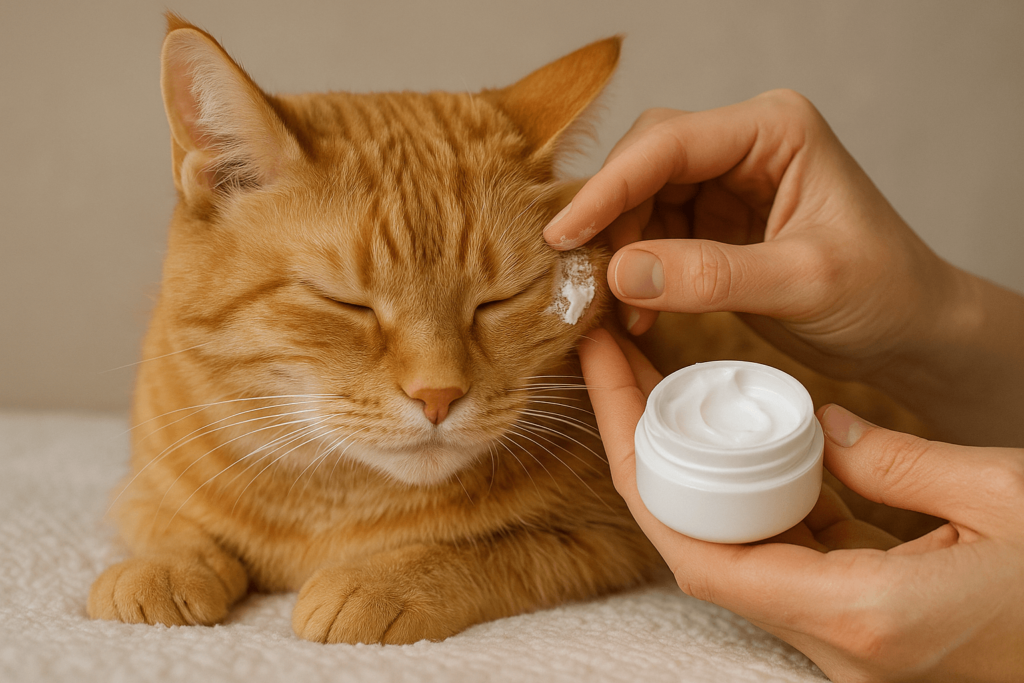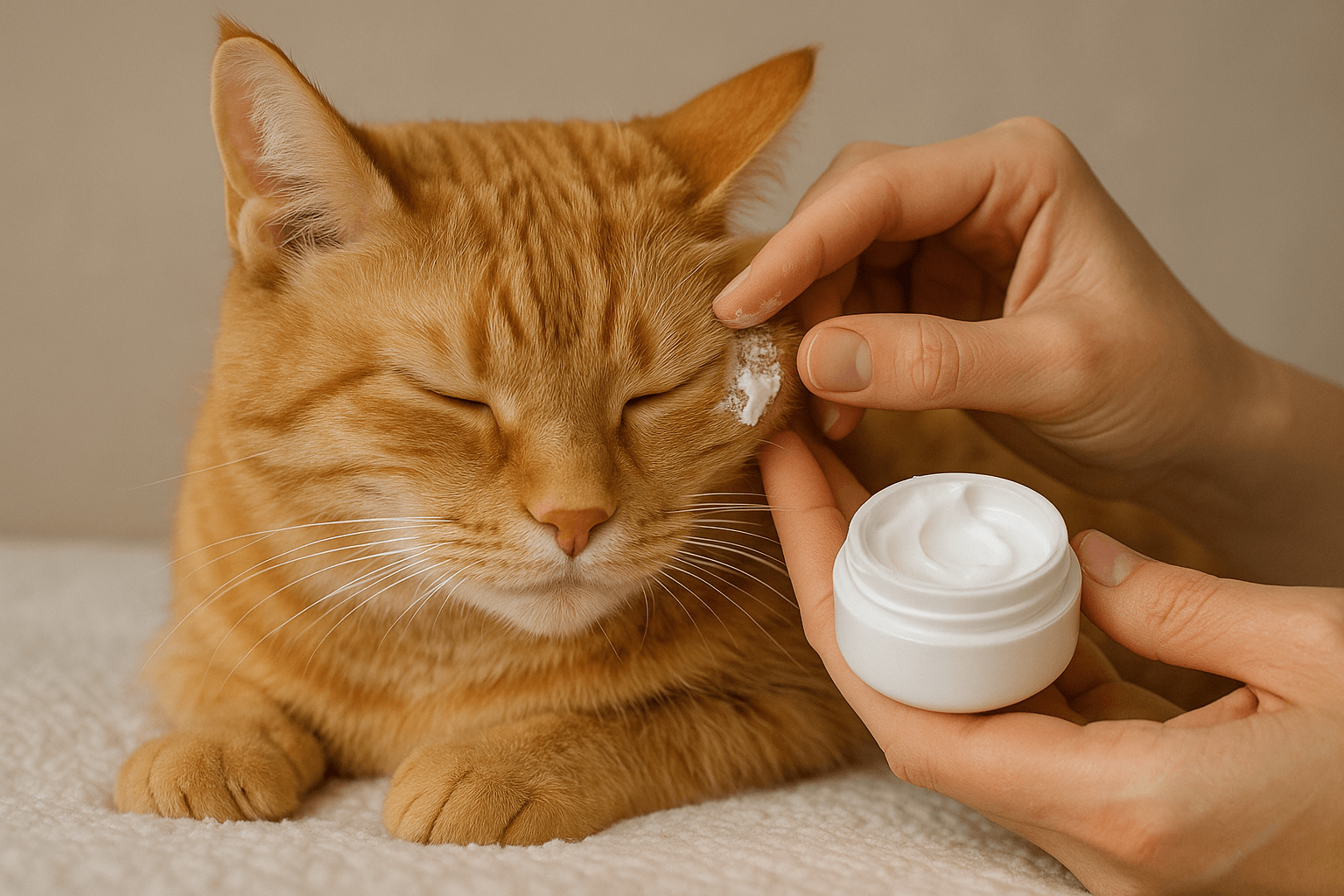Cat Dry Skin Treatment: How to Keep Your Feline’s Coat Healthy and Comfortable
Dry skin in cats is more than just an aesthetic issue—it can lead to discomfort, excessive scratching, and even health complications if left untreated. Whether your cat is shedding excessively, licking their fur obsessively, or showing visible flakes on their coat, addressing dry skin promptly is essential for their well-being. Fortunately, there are numerous ways to treat and prevent this common problem, from dietary adjustments to grooming techniques. In this blog post, we’ll explore expert tips and practical solutions to help you restore your cat’s skin and coat to its natural, healthy state.
Common Causes of Dry Skin in Cats
Understanding the root causes of dry skin is the first step toward effective treatment. Here are some factors that may contribute to your cat’s dry, flaky skin.
Dehydration:
Cats often don’t drink enough water, leading to dehydration and dry skin. Ensure fresh water is always available and consider a cat water fountain to encourage drinking.Poor Diet:
A lack of essential fatty acids, vitamins, and nutrients in your cat’s diet can result in dry, itchy skin. High-quality food is crucial for maintaining healthy skin.Environmental Factors:
Low humidity levels, especially during winter, can dry out your cat’s skin. Indoor heating systems often exacerbate this issue.Allergies:
Food allergies, environmental allergens, or flea bites can irritate your cat’s skin and cause excessive dryness.Underlying Health Conditions:
Conditions like diabetes, hyperthyroidism, or parasitic infections may manifest as dry skin. Consult your vet if symptoms persist.
By identifying the underlying cause, you can tailor your approach to effectively treat and prevent dry skin in your feline companion.

Best Home Remedies for Treating Cat Dry Skin
If your cat is experiencing mild dry skin, there are several home remedies you can try to alleviate their discomfort. These natural solutions are gentle and easy to implement.
Omega-3 Supplements:
Adding fish oil or omega-3 supplements to your cat’s diet can improve skin hydration and promote a shiny coat.Coconut Oil:
A small amount of organic coconut oil mixed into your cat’s food can moisturize their skin from the inside out.Humidifiers:
Placing a humidifier in your home helps maintain optimal humidity levels, reducing skin dryness caused by indoor heating.Oatmeal Baths:
A soothing oatmeal bath can relieve itching and irritation. Use a cat-safe shampoo formulated with oatmeal for best results.Regular Brushing:
Grooming your cat regularly removes loose hair and distributes natural oils across their coat, improving overall skin health.
These simple remedies can make a noticeable difference in your cat’s skin condition, restoring their comfort and vitality.
Check this guide 👉Understanding Cat Skin Conditions: Best 7 Health Tips!
Check this guide 👉Understanding Cat Skin Cancer: Best 7 Expert Tips!
Check this guide 👉Keratinized Skin Cysts in Cats: Best 7 Expert Tips!
Preventive Measures for Cat Dry Skin | Signs of Severe Dry Skin Issues |
|---|---|
Provide fresh water daily | Excessive licking or biting at the skin |
Feed a balanced, nutrient-rich diet | Visible redness or inflammation |
Use a humidifier in dry environments | Hair loss or bald patches |
Brush your cat’s coat regularly | Persistent scratching or scabs |
Avoid harsh shampoos or chemicals | Behavioral changes due to discomfort |
Dietary Adjustments for Healthier Cat Skin
Your cat’s diet plays a vital role in maintaining their skin and coat health. Making informed dietary choices can significantly reduce dry skin issues.
High-Quality Protein Sources:
Look for cat food that lists real meat as the primary ingredient, as protein supports skin cell regeneration.Fatty Acids:
Foods rich in omega-3 and omega-6 fatty acids, such as salmon or chicken, nourish the skin and reduce inflammation.Hydration-Boosting Ingredients:
Wet food contains higher moisture content than dry kibble, helping keep your cat hydrated from within.Limited Fillers and Additives:
Avoid foods with excessive grains, artificial colors, or preservatives, as these can irritate sensitive skin.Probiotics for Gut Health:
Probiotic supplements support digestion and nutrient absorption, indirectly benefiting skin health.
A nutritious diet tailored to your cat’s needs can work wonders in preventing and treating dry skin.
When to Seek Veterinary Help for Cat Dry Skin
While many cases of dry skin can be managed at home, some situations require professional intervention. Knowing when to consult your vet ensures your cat receives timely care.
Persistent Symptoms:
If dry skin doesn’t improve despite home treatments, it’s time to seek veterinary advice.Unexplained Hair Loss:
Sudden or excessive shedding accompanied by dry skin may indicate an underlying medical condition.Visible Parasites:
Fleas, ticks, or mites can cause severe skin irritation. Your vet can recommend appropriate treatments.Lethargy or Behavioral Changes:
If your cat seems unusually tired or irritable, it could signal a systemic issue affecting their skin.Open Sores or Infections:
Scratching or biting can lead to open wounds that require veterinary attention to prevent infection.
Early intervention from a vet can address serious conditions and ensure your cat remains healthy and comfortable.
Tips for Preventing Seasonal Dry Skin
Seasonal changes can exacerbate dry skin in cats, particularly during colder months. Here are some tips to help your cat stay comfortable year-round.
Monitor Humidity Levels:
Use a hygrometer to track indoor humidity and adjust accordingly with a humidifier during winter.Switch to Wet Food:
Increasing wet food intake during dry seasons can boost hydration and combat skin dryness.Limit Bathing Frequency:
Over-bathing strips natural oils from your cat’s skin; bathe them only when necessary and with cat-safe products.Check for Allergens:
Seasonal allergens like pollen or dust can worsen dry skin; keep your home clean and free of irritants.Provide Warm Resting Spots:
Ensure your cat has cozy, warm areas to rest, reducing exposure to cold drafts that dry out their skin.
With these seasonal tips, you can minimize dry skin flare-ups and keep your cat comfortable throughout the year.
Signs Your Cat May Have Sensitive Skin
Some cats are naturally more prone to skin sensitivities, which can manifest in various ways. Recognizing these signs helps you address potential issues early.
Frequent Scratching or Licking:
Persistent scratching or excessive grooming indicates irritation or discomfort.Red or Inflamed Areas:
Red patches or swelling suggest an allergic reaction or infection.Hair Loss in Specific Spots:
Bald patches may point to localized skin sensitivity or obsessive grooming behavior.Flaky or Scaly Skin:
Dandruff-like flakes often accompany sensitive skin and require gentle care.Unusual Odor:
A foul smell emanating from your cat’s skin could indicate an infection requiring veterinary attention.
Identifying these signs allows you to take swift action and provide relief for your sensitive-skinned cat.
Benefits of Professional Grooming for Dry Skin
Professional grooming services offer specialized care for cats struggling with dry skin. Here are some benefits of enlisting a professional groomer’s help.
Expert Techniques:
Groomers use advanced tools and techniques to remove dead hair and distribute natural oils evenly.Cat-Safe Products:
Professional groomers use hypoallergenic, pH-balanced shampoos designed specifically for feline skin.Thorough Cleaning:
Groomers can spot-clean hard-to-reach areas, ensuring your cat’s entire coat is free of debris and irritants.Stress-Free Experience:
Experienced groomers know how to handle nervous cats, making the process calm and enjoyable.Tailored Advice:
Groomers can provide personalized recommendations for ongoing skin and coat care based on your cat’s needs.
Professional grooming complements your efforts at home, offering comprehensive care for your cat’s dry skin.
Frequently Asked Questions About Cat Dry Skin Treatment
How often should I groom my cat?
Regular brushing 2-3 times a week is ideal for most cats, but long-haired breeds may require daily grooming.
Can I use human moisturizers on my cat?
No, human products can irritate your cat’s skin. Always use cat-safe products recommended by your vet.
Is dry skin common in older cats?
Yes, senior cats are more prone to dry skin due to age-related changes in metabolism and skin elasticity.
What role does hydration play in skin health?
Proper hydration keeps your cat’s skin supple and reduces the risk of dryness and flakiness.
Are certain breeds more prone to dry skin?
Yes, breeds with long or thick coats, like Persians, are more susceptible to dry skin issues.
Restoring Comfort and Confidence Through Cat Dry Skin Treatment
Treating dry skin in cats requires patience, observation, and a proactive approach. By understanding the causes, implementing preventive measures, and seeking professional help when needed, you can ensure your feline friend enjoys a healthy, itch-free life. Remember, a happy cat starts with a healthy coat—and with the right care, your cat will not only look great but feel great too. Prioritize their well-being today, and watch them thrive in comfort and style.
Understanding Cryptosporidium in Cats: Best 7 Expert Tips! – Spot symptoms, treat safely, and stop parasite spread in your home.
Understanding Cryptosporidium in Dogs: Best 7 Expert Tips! – Learn symptoms, treatment & prevention for this stubborn gut parasite.
Understanding Syringomyelia in Cats: Best 7 Expert Tips! – Recognize signs, manage pain, and support your cat’s neurological health with vet-backed guidance.
Understanding Syringomyelia in Dogs: Best 7 Expert Tips! – Expert insights on symptoms, MRI diagnosis, pain management & quality of life.





